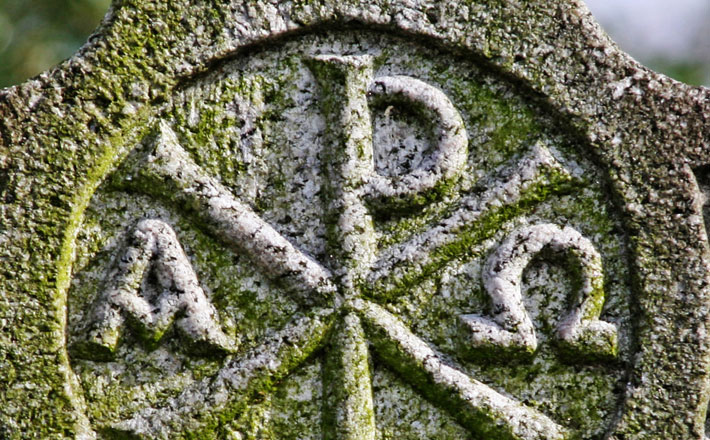Commentary on Revelation 22:12-14, 16-17, 20-21
As Biblical scholar, I have a love-hate relationship with the lectionary.
Its power, it seems to me, resides in the fact that we don’t get to cherry-pick the texts we want to read in liturgy. It forces us to read broadly within the canon, and often pairs together texts we may not have connected on our own. This forces interpreters and preachers to think differently about texts as they converse with each other intra-canonically.
But the lectionary can be bad, too. I find its slicing of Revelation 22 particularly frustrating. I understand the need for brevity in the liturgy, and there are reasons why certain texts might need to be truncated. But the way the lectionary removes small chunks (vv. 15 and 18-19) of Revelation 22 is highly manipulative. It is akin to the gerrymandering that often carves out ideologically pure electoral districts. It leaves the reader with only a partial experience of the whole. And, worse, it ignores the warning of John himself:
“If anyone takes away from the words of the book of this prophecy, God will take away that person’s share in the tree of life and in the holy city, which are described in this book.” (Revelation 22:19)
The skipped verses represent the dark side of Revelation’s apocalyptic message. Without them, the reader is left with a rosy, positive picture of this book. It’s not that I like the negative stuff, but without it, the edge of John of Patmos’ words gets lost.
Revelation is eschatological. It squirms beneath questions about economic justice, political hegemony, and theological allegiance. While it has some of the most beautiful hymns, liturgical set pieces, and visions of a heavenly future, it also has many troubling images. Rivers of blood, death for large swaths of humanity, and turmoil in the cosmos, all point toward an upheaval that is part of the apocalyptic message of its author.
The problem is this: if we only retain the positive elements of Revelation, then it becomes too easy to miss the deep critique that John of Patmos offers. It becomes the chamois with which we will wipe away every tear, a soft assuaging of our fears and concerns. Such a reading, where only the “good” elements remain, forces an interpretation in which we are the “righteous” in John’s program. This may or may not be warranted.
John’s apocalypse is about empire, the worship allegiance it requires, and how that worship is intercalated with exploitative economic structures. Allegiance to Rome and participation in its economics is akin to defilement. There is no grey area, no wiggle room. In his final chapter, John does not shy away from his divisive language, the idea that humanity is either righteous or wicked, and the dual fates for those two parties.
This lectionary text recapitulates the themes of Revelation rather well. The opening in vv. 12-13 suggests the imminent nature of the visions and reasserts God as sovereign and eternal. Verse 14 refers back to chapters 6 and 7. In chapter 6, the martyrs who live underneath an altar in John’s vision are given a white robe. In 7:13 John is told by one of the elders that the image he saw of those robed in white are those who have come out of the “great ordeal.” They have washed their robes white by using blood. Verse 15, which the lectionary skips, talks about those who will not be allowed in the heavenly, eschatological city: dogs, sorcerers and fornicators and murderers and idolaters and everyone who loves and practices falsehood.
The juxtaposition of vv. 14 and 15 is vitally important. The questions and issues raised by John are not just academic or hypothetical. By all accounts, real persecution has been experienced or will be imminently. The close reader will know that these robes are washed in blood to get them white, laundering advice that only makes sense theologically. It seems that people’s lives are at stake (see 2:13).
The question here becomes how do we make the leap from John’s apocalyptic visions, rooted in persecution, to our world today? The lectionary’s divisions make it too easy to see ourselves as the righteous. Unless we face the kind of persecution John’s community did, this parallel hardly seems apt. At the same time, it might be particularly harsh to suggest that modern Christians are among the fornicators and dogs and murderers.
Here at the end, the readers are still left with a choice, of sorts, despite some tendencies of eschatological and apocalyptic determinism you might find in this text. People are going to be repaid for their work (Revelation 22:12). There are things people can do to align themselves with God’s sovereignty. The future, eschatological depictions are meant to engender a moral response. There is still, even at the end, an invitation: “Come” is repeated three times in v. 17.
This invitation is not easy. And there is not time to sit back and think about it. Time is up. God is coming soon (Revelation 22:20). With the economic and religious critique offered by Revelation, accepting the invitation to “come” would cause us to rethink the structural sin in our society: where our food comes from, who makes our iPhones, and the ecological impact of a 45 minute commute. If there is good news at the end of Revelation, it is that God does not seem yet to have closed the door to heaven, even as God knocks on the door of our world (Revelation 3:20).


May 8, 2016